Regarding the floodings in Spain, here are a couple of headlines from El Pais, translated:
The first figures of deaths in the Valencia floods were given the following morning, but those of those not located remain unpublished six days later. There are no foolproof or universal methods to fix them, but experts point out that they should be communicated
Number of connections cut, number of homes without electricity or water, number of diverted flights... There are many different ways of reporting the same tragedy, but in the end they all require objective figures. The most crucial, the number of deaths, began to increase a few hours after the tongues of water swept away whatever they encountered in their path. At first that value was a mere “several deaths”, as the president of the Generalitat Valenciana, Carlos Mazón, advanced, the same midnight on Tuesday.
Perhaps they know too little about what has happened, or what is going on to know. The Wiki for
October 2024 Spain floods says that 200+ died and 2000+ are missing.
Another headline was:
Last hour of the dana-live | The general commander of the HEU replicated to Mazon: “I have 1,000 soldiers at the door, but I can't enter without permission”
“From the first moment all the capabilities of the armed forces are put at the service of the Valencian Community”, said the command of the emergency unit of the military [...]
The overall head of the EMU, Javier Marcos, he has appeared this Monday for a report of the meeting of the crisis committee for the catastrophe of the dana. “From the first moment all the capabilities of the armed forces are put at the service of the Valencian Community,” he said. The head of the Military Unit of Emergency has also responded to the president autonomic, Carlos Mazón,
that this same Monday, has been acquitted of the greater or lesser presence of the army in the affected populations, ensuring that the controls are for operating the military that detect if you need to come more detachments. “
I can have 1,000 soldiers at the door of the emergency, but I can not enter legally until the director of the emergency authorize”, has been replicated to the military leader. Previously, the president of the PP, Alberto Núñez Feijóo, has called for the declaration of a national emergency:
“If you choose, you have our support.” [...]
They seem to need a few more emergency events to get up to speed.
In the above article there was the word "dana" What is that? An article in English updated in June explains:
Updated June 2024
DANA is a Spanish acronym for
Depresión Aislada en Niveles Altos. It translates to"
Isolated Depression at High Altitudes". A DANA is a type of weather phenomenon in which
a "pocket" of cold air in the upper atmosphere separates from the main stream and sweeps over a warmer air mass. This process can result in severe weather, including heavy rains, and flooding. In recent years there has been an increase in heavy and torrential rains on the Mediterranean side of the Iberian peninsula.
During a DANA alert, stay indoors is possible and if you are driving, be aware of flooding and strong water currents, especially in hilly and mountainous areas where mudslides area risk.
"La gota fría" is another Spanish expression often heard in connection with the DANA weather system. "La gota fría" literally means "the cold drop". This term refers to the same phenomenon as a DANA when a "pocket" or "drop" of cold air forms in the upper atmosphere and separates from the main stream.
"La gota fría" is a well-known expression in Spain, especially in the coastal regions where this phenomenon is common and can cause severe storms.
The floods in Spain can be seen in the context of:
2024 Floods in Europe
The Wiki for
2024 Floods in Europe says there are 330+ deaths and 2020+ missing. Going through the instances, the flooding in Valencia weighs heavily in the number:
On 29 October, an unusually intense
cold drop led to widespread flooding in Valencia and other parts of southeastern Spain, such as Almería and Málaga,
killing 217 people and leaving 2,000 more missing. The floods were considered the worst natural disaster in the country's modern history.
The situation in Europe is still less serious than it has been in Africa
- 2024 Kenya–Tanzania floods death 461+
- 2024 Nigeria floods
| Deaths 415+ |
| Non-fatal injuries 2,712+ |
- 2024 South Sudan floods
- Deaths unknown
- 735,000 people impacted
- 65,000 people displaced
- 2024 Sudan floods (different from the above) deaths 68+
- 12,000+ houses destroyed or damaged
- 44,000+ displaced
- 2024 West African floods (It is possible that some of the deaths in Nigeria, the above 468+) go into the numbers here too, but it is not clear.
- Deaths 1,500+
- displaced1,000,000+
Adding it up there are at least 2000+ deaths in Africa, this year alone.
Comment: The Spanish EU
High Representative of the Union for Foreign Affairs and Security Policy Josep Borrell Fontelles, from Catalonia in fact, has been talking about how much of a Garden the EU is compared to the rest of the Global Jungle. We don't know if he is now witnessing his little garden of olives and oranges being swept away along with his electric car but we can console him that it is not as bad as in Africa.
The Wiki on Monsoon lists the monsoon times for different parts of the world, and it says about Europe:
See also:
Climate of Europe
The
European Monsoon (more commonly known as the
return of the westerlies) is the result of a resurgence of westerly winds from the Atlantic, where they become loaded with wind and rain. These westerly winds are a common phenomenon during the European winter, but they ease as spring approaches in late March and through April and May. The winds pick up again in June, which is why this phenomenon is also referred to as "the return of the westerlies".
The rain usually arrives in two waves, at the beginning of June, and again in mid- to late June.
The European monsoon is not a monsoon in the traditional sense in that it doesn't meet all the requirements to be classified as such. Instead, the return of the westerlies is more regarded as a conveyor belt that delivers a series of low-pressure centres to Western Europe where they create unsettled weather. These storms generally feature significantly lower-than-average temperatures, fierce rain or hail, thunder, and strong winds.
The return of the westerlies affects Europe's Northern Atlantic coastline, more precisely Ireland, Great Britain, the Benelux countries, western Germany, northern France and parts of Scandinavia.
I did try to look for the westerlies, but it did not help much.
Polarportal.dk, a site with focus on Greenland, has this map for the period in which the heavy rain was reported over Valencia.
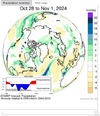
Notice above that we are now in a period of strong westerlies. Still, it seems, no system prediction can be based alone on whether the westerlies are strong or weak. When you scroll back to September, and the time for the flooding in Poland, there is this map and it showed weak westerlies:
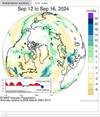
Just for reference: The choice of the above time-interval, matched what the Wiki for
2024 European floods writes about Poland for the above period:
From 13 September, storms and torrential rainfall struck
Opole Voivodeship and
Lower Silesia, leading to flooding on 14–16 September.
The question of droughts
Then I looked at the
drought situation in Europe. The map below is only updated to the beginning of October, three weeks back, but it still gives an idea.
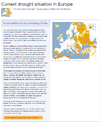
Another
map shows drought and excess precipitation for the whole world.
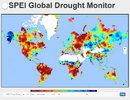
I'm not sure how to verify the time of the above map, but it appears both the rains in Poland and North Carolina have been included.
How does the above map compare to say September of 2023?
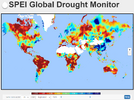
And the year before that, 2022:
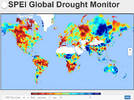
The above site has data going back to January 1955. It would be possible to take screenshots from the months of all the intervening years, almost 70, which would give close to 840 maps, and then create a time-lapse video. If we give one second for each, it would last about 12 minutes. Without giving spoilers, here is September 1955:
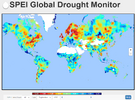

 www.sott.net
www.sott.net

 rumble.com
rumble.com












